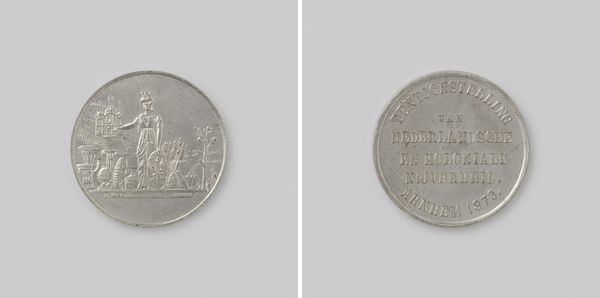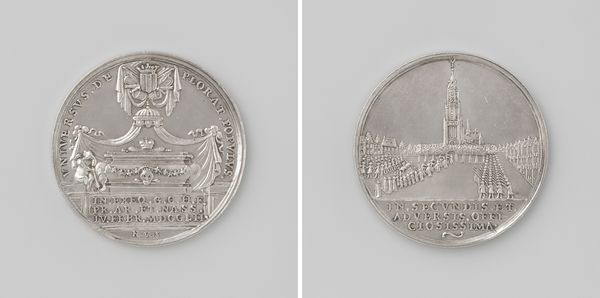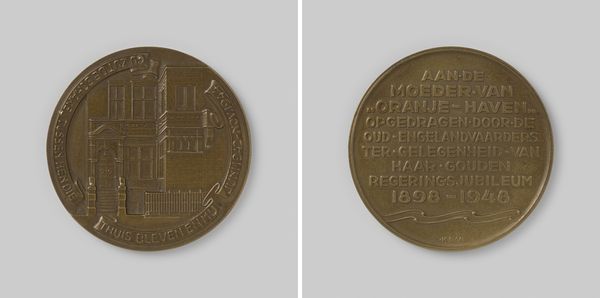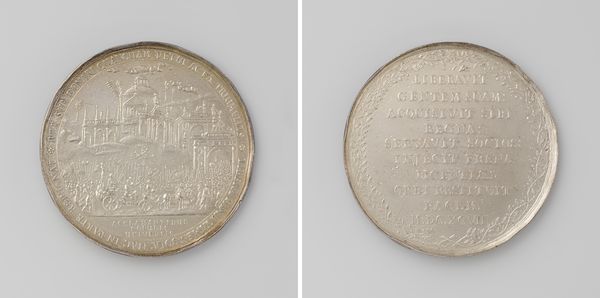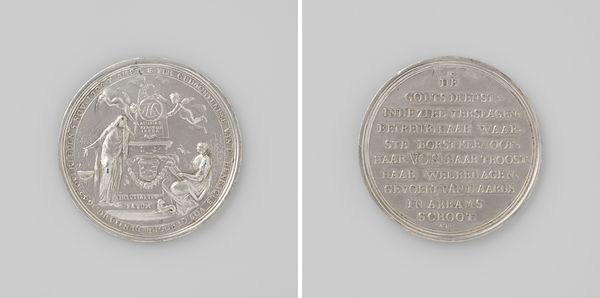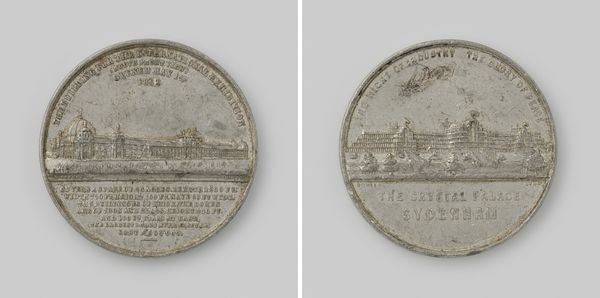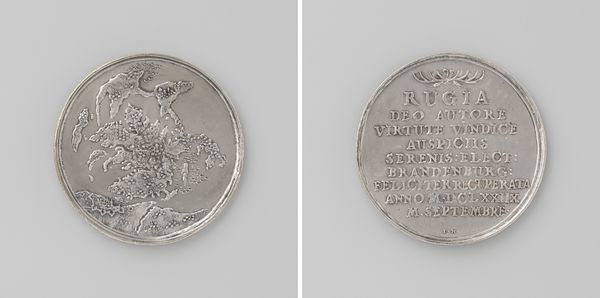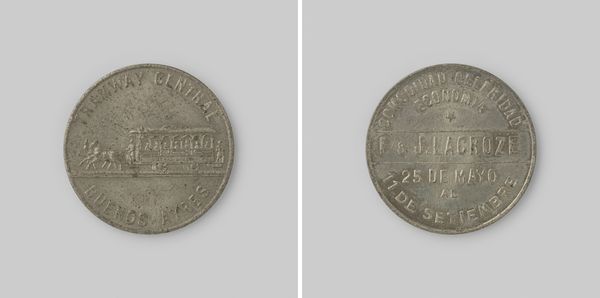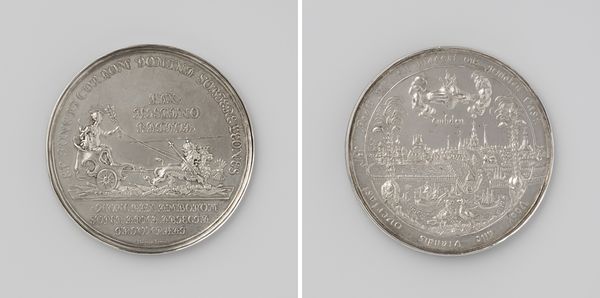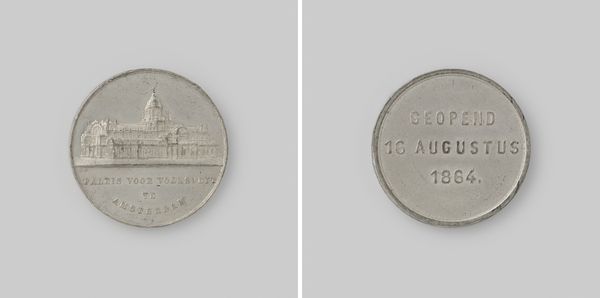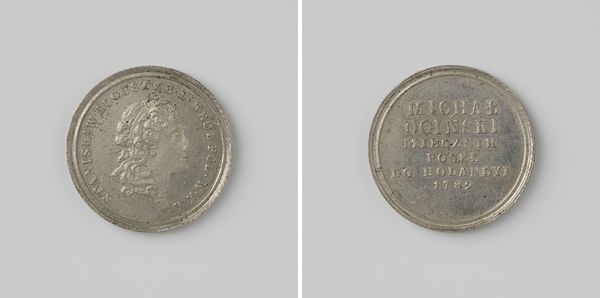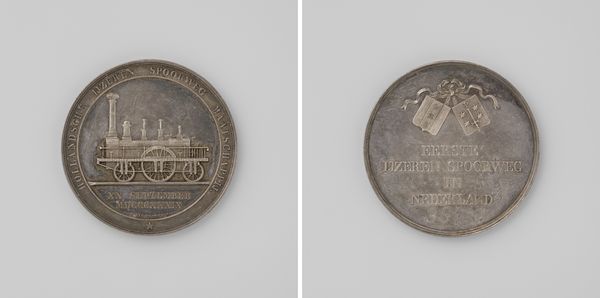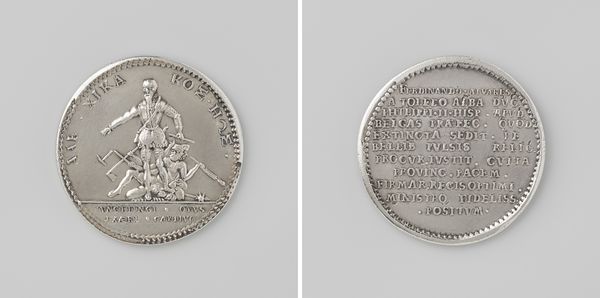
Herinnering aan de Internationale Koloniale en Uitvoerhandel-Tentoonstelling te Amsterdam 1883 1883
0:00
0:00
Dimensions: diameter 7.5 cm, weight 181.67 gr
Copyright: Rijks Museum: Open Domain
Editor: So, this is a commemorative medal, "Herinnering aan de Internationale Koloniale en Uitvoerhandel-Tentoonstelling te Amsterdam 1883," which I understand translates to "Memory of the International Colonial and Export Exhibition in Amsterdam 1883." It looks like it's made from mixed metals and features a relief sculpture. I am struck by the almost celebratory feel of this medal; despite its association with colonialism, it projects this image of industrial progress and grandeur. What do you see in this piece? Curator: It's crucial to contextualize this seemingly celebratory depiction. The medal commemorates an exhibition deeply intertwined with Dutch colonial power. How does its design reinforce or perhaps mask the underlying dynamics of that power? Editor: Good question. Looking closer, it's almost like a facade – the impressive buildings depicted hide the complex exploitation that fueled their creation and, I suppose, the exhibition itself. Curator: Precisely. These exhibitions were tools for legitimizing colonial endeavors. The presentation of goods from colonized lands, framed as displays of Dutch achievement, effectively normalized colonial rule for the Dutch public. What effect do you think the production of such objects, and the associated fairs and festivities, would have on people back home? Editor: It’s creating, or reinforcing, this cultural idea of Dutch superiority through trade, resource control, and technological progress. Sort of whitewashing it? Curator: Indeed. Objects like these medals functioned as propaganda, embedding colonial ideology into the everyday lives of the population. It's not merely a memory, but a carefully curated one. The visual language speaks of advancement, yet silences the violence and inequality inherent in the colonial project. Editor: That gives me a lot to think about! It's much more sinister than a simple commemorative object; it reveals how art was complicit in the colonial project, not simply documenting it. Curator: Exactly. And understanding that complicity allows us to critically examine similar instances throughout history and in our present day.
Comments
No comments
Be the first to comment and join the conversation on the ultimate creative platform.
